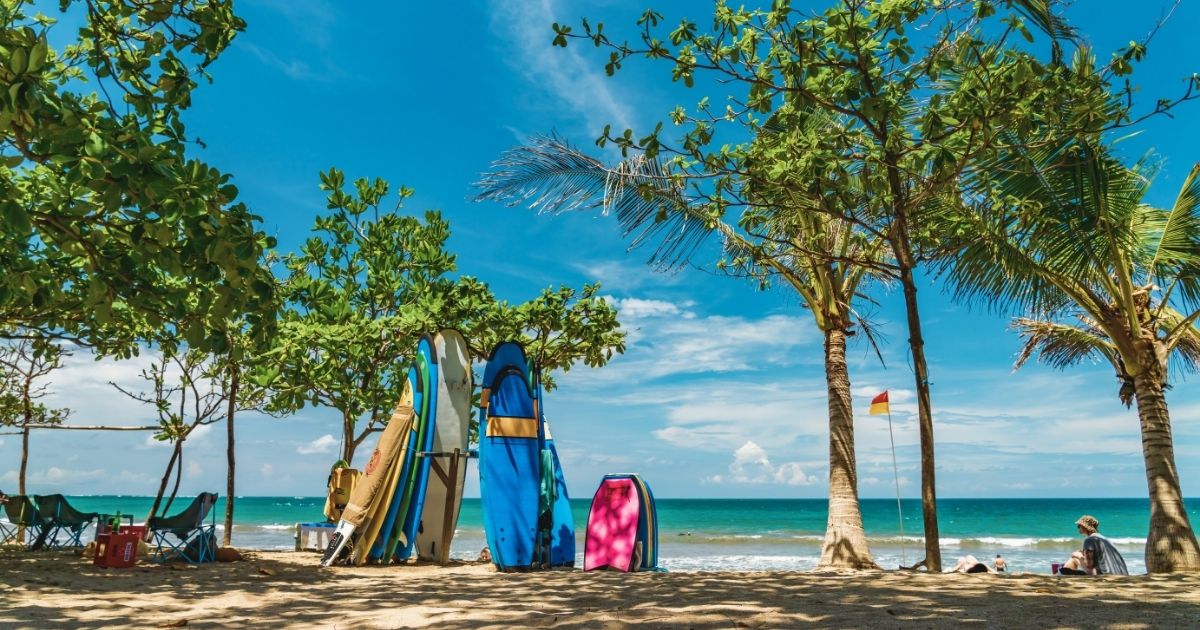Exploring Italy’s coastal roads, medieval towns, and rural countryside offers a freedom you simply can’t get with trains alone. Moreover, knowing how to rent a car in Italy not only expands your itinerary but also allows you to experience the country more like a local.
For digital nomads and long-term travellers, however, renting a car in Italy can seem confusing at first. What documents do you need? How old do you have to be? Do Americans need an International Driving Permit? Fortunately, this guide answers all those questions and more, with clear tips and insider advice to make the process stress-free.
Understanding Italian car rental requirements

Before diving into the process of how to rent a car in Italy, it’s crucial to understand the basic requirements and regulations. In fact, Italy has specific rules that differ from other European countries, and being prepared in advance will ultimately save you considerable time and stress at the rental counter.
Essential documentation
To rent a car in Italy, you will need to present several important documents. First of all, a valid driver’s license from your home country is mandatory—you must have held it for at least one year. Furthermore, for non-EU licenses, an International Driving Permit (IDP) is legally required to accompany your original license. Since this translation cannot be issued locally, it must be obtained before arriving in Italy.
In addition, a major credit card in the renter’s name is essential, as debit cards are often rejected by Italian rental companies. The card must also have sufficient available credit for the security deposit, which typically ranges from €300 to €1,500 depending on the vehicle category. Moreover, most companies will require your passport and verification of your address, such as a hotel booking or proof of accommodation.
🌟 Pro tip: request your International Driving Permit at least four weeks before your trip, as processing times can vary. In the US, these are issued by AAA, while other countries have their own authorized agencies.
Age and driving experience restrictions
Italian car rental companies enforce strict age requirements, so it is important for digital nomads to be aware of these rules before booking. Generally, the standard minimum age for renting a car in Italy is 21 years. However, this often comes with significant surcharges—sometimes up to €25 per day—for drivers under 25. Consequently, these “young driver fees” can substantially increase your overall costs.
Furthermore, more premium or powerful vehicles usually have higher minimum age requirements, typically 25 or even 30 years for luxury models. In addition, some rental agencies impose maximum age limits of 70 or 75 years. Moreover, most companies require that you have held your driver’s license for at least one year, while certain premium car categories may demand a minimum of three years of driving experience.
💡 Did you know? Italian law requires all rental cars to have insurance. However, the mandatory basic coverage (RCA) only covers third-party liability. Therefore, damage to your rental car is not included, making supplementary insurance particularly important for peace of mind.
How to rent a car in Italy: step-by-step process

Navigating the car rental process in Italy requires careful preparation and attention to detail. Therefore, following these systematic steps will help you secure the right vehicle while avoiding common pitfalls that many digital nomads encounter.
Researching and booking options
When researching how to rent a car in Italy, it is best to start by comparing offers across multiple platforms—both aggregator sites and direct bookings with rental companies. In addition, look beyond the headline daily rate and carefully examine what is included, such as insurance coverages, mileage limits, and fuel policies. Typically, Italian rental companies offer three fuel options: full-to-full, which is usually the most economical; full-to-empty, which is convenient but often more expensive; or pre-purchase, which is rarely the best value.
Moreover, consider your itinerary carefully when selecting your pickup location. While airport and train station rentals provide convenience, they usually incur premium location surcharges of 14-20%. On the other hand, downtown locations are often cheaper, although they may have limited hours, especially on weekends. For longer rentals of a week or more, the higher airport surcharge may be offset by generally lower weekly rates, making it worthwhile to compare both options.
Selecting the right vehicle

Choosing an appropriate vehicle size is crucial when planning how to rent a car in Italy. Since Italian roads—particularly in historic towns and rural areas—are notoriously narrow, compact cars are usually the most practical choice. Additionally, standard transmission (manual) vehicles are the default in Italy, while automatic transmissions typically cost 30-40% more and require advance reservation, as they comprise only about 20% of rental fleets.
Furthermore, consider your travel needs realistically: while a Fiat 500 is perfect for couples exploring cities, it may feel cramped for longer trips or groups with luggage. Most Italian rental cars are diesel-powered, offering better fuel economy, which is an important factor given Italy’s high fuel prices. In addition, always check the trunk (boot) capacity if you are traveling with significant equipment, since Italian cars often have smaller storage space compared to North American models.
🌟 Pro tip: always take photos or videos of any pre-existing damage during the car inspection, including date and time stamps. Doing so can prevent disputes about damages upon return and potentially save you hundreds of euros.
Understanding insurance options
Navigating insurance options is perhaps the most complex aspect of how to rent a car in Italy. While the mandatory basic third-party liability insurance (RCA) is included in all rentals by law, it only covers damage to other vehicles and property, not your rental car. Therefore, it is important to consider additional coverages for better protection.
Collision Damage Waiver (CDW) reduces your liability for vehicle damage, though usually with a significant excess (deductible) of €500-1,500. Theft Protection (TP) covers vehicle theft, also with a substantial excess. Super CDW/TP eliminates or significantly reduces these excesses but adds €15-30 daily to your costs. Moreover, Personal Accident Insurance covers medical costs for vehicle occupants, while Road Assistance provides towing and roadside help.
It is also important to be aware that Italian rental insurance typically excludes damage to tires, windows, roof, undercarriage, interior, and mechanical problems caused by improper fuel. Consequently, a thorough inspection before driving off is essential to avoid unexpected costs.
Digital nomad-specific considerations for Italian car rentals

For digital nomads, renting a car in Italy presents unique considerations beyond those of typical tourists. Understanding how to rent a car in Italy with a focus on long-term flexibility, connectivity, and balancing work-travel needs can significantly enhance your nomadic experience.
Connectivity solutions for road trips
Maintaining reliable internet access while exploring Italy’s countryside is essential for digital nomads. Many Italian rental cars don’t offer built-in WiFi, and cellular coverage can be spotty in mountainous regions like Tuscany, the Dolomites, or rural Sicily. A dependable eSIM solution from Holafly ensures you stay connected regardless of location, allowing you to take work calls from scenic viewpoints or submit deliverables between vineyard visits.
Unlike traditional SIM cards, an eSIM provides immediate activation without hunting for a physical store, particularly valuable when renting cars from remote locations or airports with limited telecom options. This connectivity buffer allows you to confidently navigate using map applications, research accommodations on the go, and maintain client communication while enjoying the freedom that comes with having your own vehicle.
Long-term rental strategies

For digital nomads planning extended stays in Italy, long-term rental strategies require careful consideration. Since standard car rentals become prohibitively expensive beyond 3-4 weeks, with monthly rates often exceeding €1,000 even for basic models, it’s important to explore alternative approaches.
Key considerations for long-term car rentals in Italy:
- Lease-back programs, available through brands like Peugeot, Renault, and Citroën, often offer better rates for 30+ day rentals.
- Local agencies in smaller cities can provide more affordable monthly rates than international chains.
- Insurance costs can compound significantly over long periods, so prioritize packages with zero excess.
- Seasonal timing greatly affects prices; for example, rates can double in August and December.
- Many companies offer substantial discounts, often between 10-30%, for pre-payment and online bookings.
🌟 Pro tip: for stays exceeding two months, investigate short-term leasing options through dealerships in major cities such as Milan or Rome. These programs often include maintenance and comprehensive insurance at rates significantly lower than traditional rentals for similar periods.
Final thoughts on how to rent a car in Italy
Understanding how to rent a car in Italy opens a world of possibilities for digital nomads seeking authentic experiences beyond the typical tourist trail. By navigating the initial rental process carefully and handling the unique challenges of Italian roads, what might initially seem stressful can become a smooth and enjoyable adventure.
Although Italy’s public transportation system is excellent in major cities, a rental car provides unparalleled flexibility to discover charming villages, secluded beaches, and mountain retreats that perfectly balance work and exploration. These hidden gems often offer the ideal blend of connectivity, tranquility, and cultural immersion that many travelers seek.
As you plan your Italian journey, it’s important to balance the freedom a rental car provides against the responsibilities it entails. With careful research, proper documentation, and the right expectations, driving through Italy can become one of the most rewarding parts of your travel experience.
Need more guidance on perfecting your digital nomad setup in Italy?
Nomada offers comprehensive resources to support your journey. From connectivity solutions to accommodation recommendations, we’re here to help you create a balanced nomadic lifestyle.
Your Italian adventure awaits—navigate it confidently with Nomada 👉
Frequently asked questions about how to rent a car in Italy
Yes, if your driver’s license isn’t from an EU country, an International Driving Permit (IDP) is legally required alongside your original license. This translation must be obtained in your home country before arriving in Italy, as rental companies will request it at pickup.
A credit card in the main driver’s name is essential. Italian rental companies typically place a hold of €300-1,500 on your card as a security deposit. Debit cards are generally not accepted, and those that are may require additional documentation and result in a much higher deposit.
Zona Traffico Limitato (ZTL) areas restrict vehicle access in historic centers. Unauthorized entry results in substantial fines (€80+). Always research ZTL boundaries before driving into town centers, and consider parking outside these zones and walking or using public transportation instead.
Yes, one-way rentals are available but typically incur significant drop-off fees (€50-150) depending on distance. These fees are often waived for rentals between major cities like Rome, Florence, and Milan, but returns to smaller locations can be costly.
Traffic violations are typically forwarded to you through the rental company, which will charge your credit card for the fine plus an administrative fee (€30-60). Keep all rental documentation for at least six months, as fines can take weeks or months to process.
Rental prices vary by season, city, and car type. In high season (summer and holidays), small cars start at around €40-60 per day, while larger or automatic models can exceed €100 per day. Booking early and outside peak months can significantly reduce costs.




